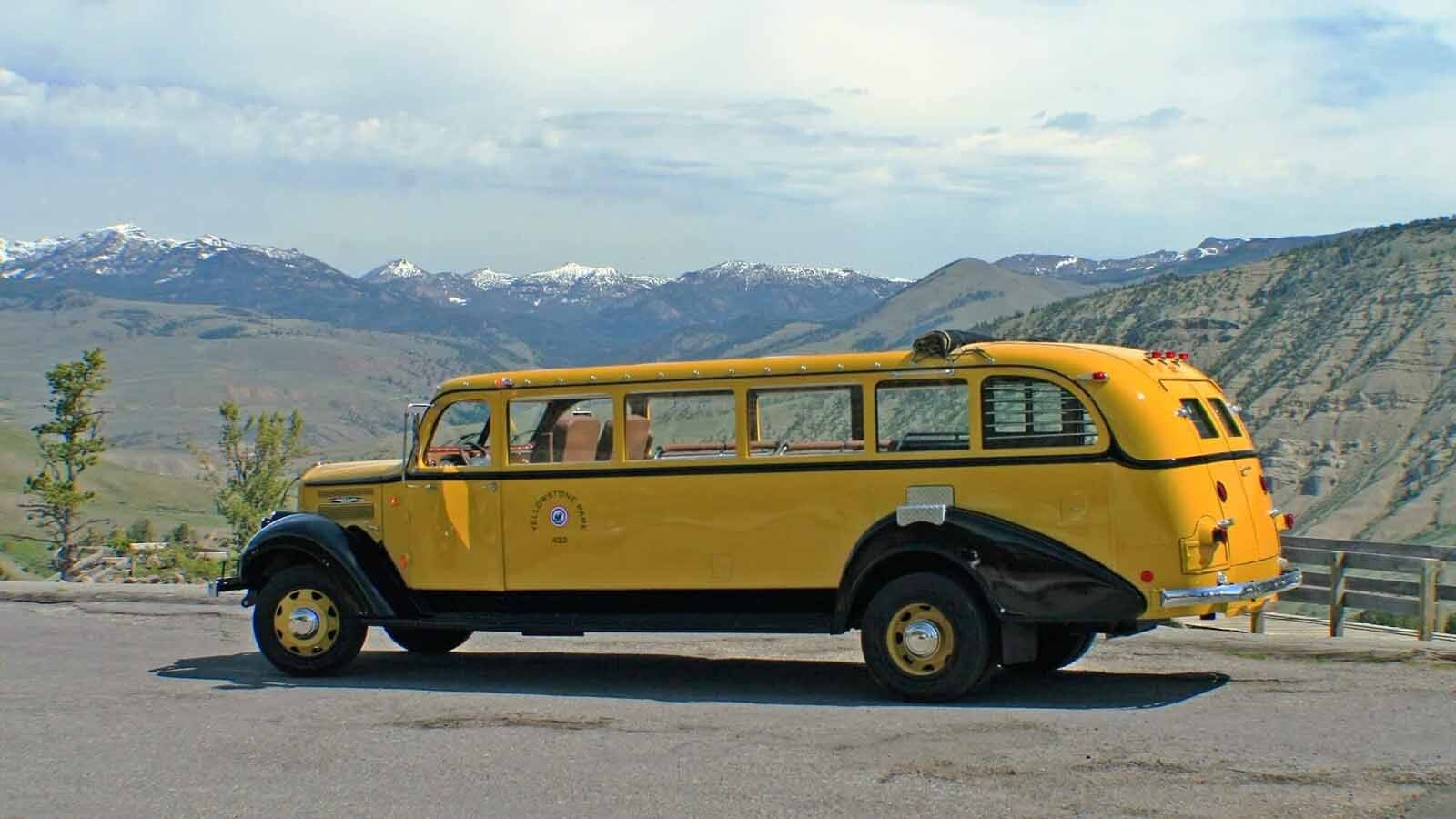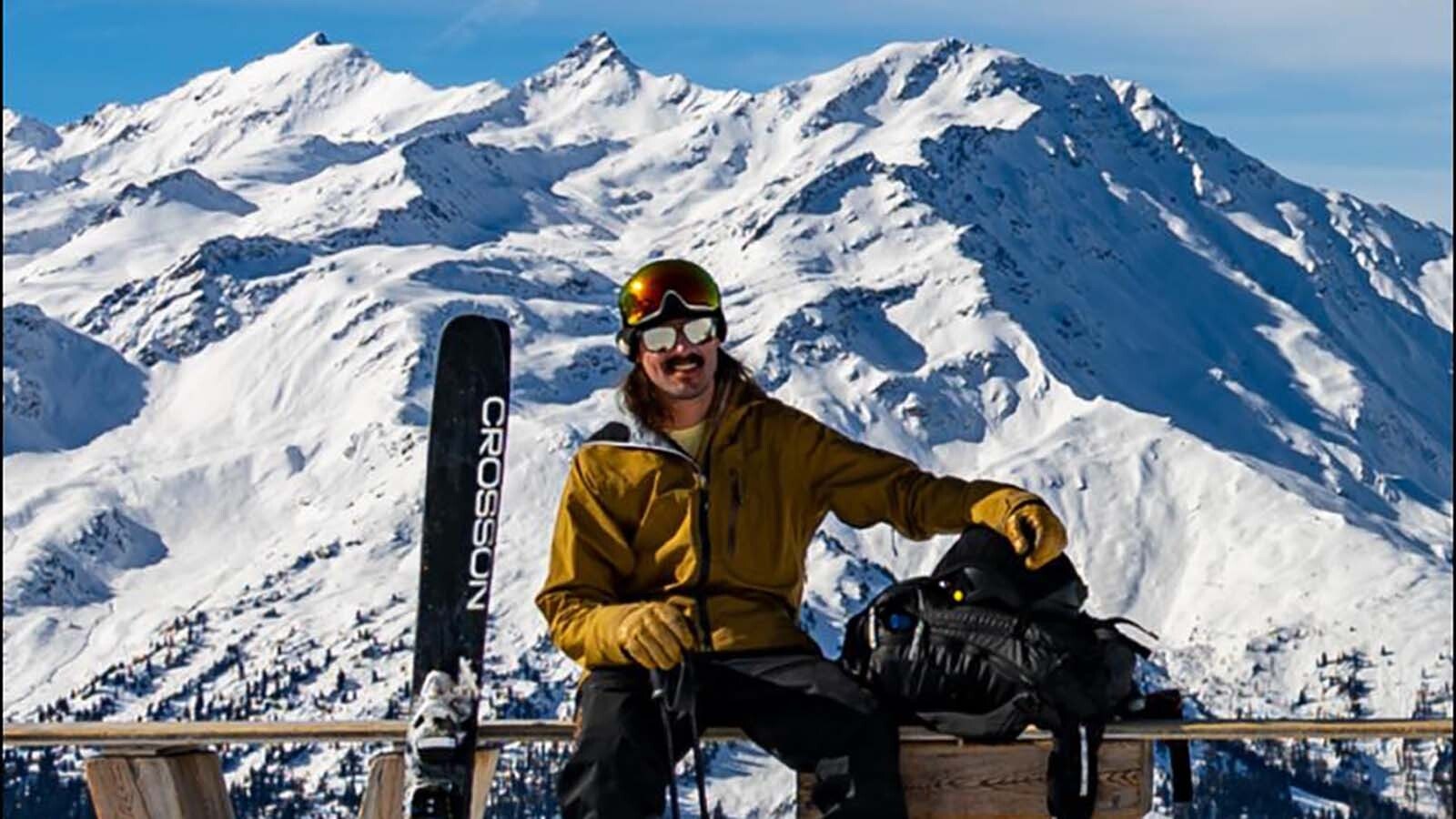Each spring in the early 1960s, a unique species of bus driver flocked to Mammoth Hot Springs to prove themselves worthy of driving Yellowstone's iconic White Model 706 buses made between 1936 and 1939.
These seasonal employees, mostly college-aged men drawn by adventure and the promise of summer wages, faced a peculiar rite of passage that park veterans simply called "the egg test."
David Swingle was among them in the spring of 1963.
At 20 years old, the Montana native had already been driving since he was 14 — a common practice in those days that required only a parent's signature rather than a driving test.
Confident in his clutch work and eager for the job, he hopped on the train from Bozeman to Livingston and hitchhiked to Mammoth to join the ranks of Yellowstone's famous "jammer" drivers.
"Usually, it was near Mammoth at the headquarters," Swingle recalled of the test location. "They picked a street that had a bit of a hill on it and put the handbrake on, and then they placed an egg behind the wheel, touching the wheel."
The test was deceptively simple yet brutally demanding. Drivers had to start the heavy White 706 bus on an incline without allowing it to roll backward even a single degree — enough to crack the egg.
"You don't dare have an error and roll back off a cliff or something," Swingle explained. "You had to be able to manage a clutch. It's difficult to do to keep your foot on the brake or use the handbrake to hold the bus."
Swingle passed the test and spent two summers driving the iconic yellow buses through Yellowstone's treacherous mountain roads, carrying 12 to 14 passengers at a time on tours between the park's lodges and popular destinations. The work paid between $100 and $200 a month.
It cost $1 to sleep in a bunk at night, so Swingle often chose to save his money by sleeping in the back seat of the bus or in its spacious luggage compartment.
Suddenly, A Bus
Now parked in Swingle’s driveway is a White 706 bus acquired by the Museum of the Rockies at Montana State University.
Swingle has worked and volunteered for the museum since he was a teenager, and now he’s leading the museum’s effort to return a working jammer to the streets of Bozeman.
The bus was donated to the museum without much of an origin story. It lacks the signature yellow paint of Yellowstone’s legendary fleet of jammers.
The unsynchronized four-speed transmissions in the White 706 buses were notorious for their gear-grinding sounds — earning drivers the nickname "gear jammers" — but they also had an unusual feature that proved both blessing and curse.
"In some cases, these buses have a lower range in reverse than they do in forward," Swingle said. "There are instances where we would back them up switchback roads because we couldn't drive them up forward."
One of the Wyoming locations was Mount Washburn, where drivers would reverse their way uphill with a full load of passengers, all while the bus faced a steep drop-off.
"You're pointed downhill while you're backing uphill in reverse," he recalled. "Because there's no turnaround, lots of people chattering away nervously looking over the side where there is nothing to look at down below except treetops."
Swingle said his biggest fear on this route was, “Getting a wheel over the edge."
Mystery Machine
The retired educator plans to help restore it for local historic tours around the Gallatin Valley.
But as he worked on the restoration — replacing brake lines, rebuilding wheel cylinders, and addressing decades of mechanical wear — Swingle encountered a puzzling mystery.
He couldn’t find any evidence that this bus was ever a Yellowstone jammer.
"The more I worked on it, the more I realized that there are no signs of yellow and black paint anywhere on it," he said, examining the wood frame panels and interior spaces where original paint typically survives.
"There's no sign of a respray on this. It's a very fine paint job,” he said, marveling at the tan and red exterior and noting how much of the bus’s structure is wooden, made of oak.
"It's either the world's best paint job on this bus or it's the factory job," he said. "I can't prove it. I can find no trace of yellow or black paint on it."
That discovery led him down a rabbit hole of research into the history of the about 500 White 706 buses manufactured between 1936 and 1939 for use in America's national parks.
While 98 went to Yellowstone and about 80 to Glacier National Park, the remaining buses were distributed to smaller parks throughout the system.
The tan and red color scheme of the Museum of the Rockies bus suggests to Swingle’s eye that it might have served one of the desert national parks, like Zion or Bryce Canyon.
Enter The Experts
Swingle's quest for answers led him to Tracy Kroon of Krown Restoration in Sedan, Montana — a small community where Kroon has built a reputation as one of the country's foremost experts on restoring these historic buses.
Kroon's journey into the jammer bus restoration business began with a simple request from a ranch customer years ago.
"He came to me one day and he said, the owner of the ranch would like to buy one of the old Yellowstone Park buses," Kroon recalled. "And he said, could you find one?"
That first restoration led to another, and another. Today, Kroon operates a 10-person shop that has worked on 30 of the vintage buses, with five currently in various stages of restoration.
The market for authentic restorations has proven surprisingly robust.
In 2022, one of Kroon's restored buses sold for $1.3 million at auction — a price that reflects both the rarity of surviving examples and the meticulous craftsmanship required to bring them back to life.
The Museum of the Rockies once had a restored jammer bus, but it was sold to the upscale Yellowstone Club in Big Sky.
That bus also caught the attention of comedian and car collector Jay Leno, earning a spot on "Jay Leno's Garage" in 2022. During that episode, Leno marveled at the bus's smooth operation and historical significance.
"You know, for as heavy as it is you'd think it'd be laborious to drive it, but it's actually quite nice," Leno noted while steering the restored bus and marveling at the quiet engine — perfect for sightseeing.
Insurance Records
When Swingle contacted Kroon about his mystery bus, the restoration expert mentioned something that could provide definitive answers: his wife Rhoda maintains a 1941 insurance roster that lists all the buses in Yellowstone's fleet, complete with engine numbers and serial numbers.
"If he had the engine number and the serial number, I could tell him if it was a park bus or not," Kroon explained. "I could give him the original number of the bus."
Swingle reached out to Kroon with the numbers and Rhoda offered a big reveal.
Despite the complete absence of Yellowstone's signature yellow paint, the bus sitting in Swingle's driveway was indeed an authentic Yellowstone jammer.
According to the 1941 insurance roster, his White 706 was officially Yellowstone Park bus No. 394.
For Swingle, a self-described "cold-blooded academic," the revelation provided exactly what he craved most.
"I like evidence," he said. "This is good evidence that this bus was Yellowstone's."
The confirmation means that when the Museum of the Rockies eventually decides to repaint the bus, it can authentically restore it to its original yellow and black. More importantly for the museum, it validates the historical significance of the acquisition.
"We don't fake it," Swingle emphasized, explaining the museum's commitment to authenticity. "Now we will probably use it for a while until we make our mind up whether to completely restore it or not."

Call For Help
Swingle’s goal is to offer the same kind of open-air touring experience that made these buses legendary — this time showcasing the historic sites and scenic beauty of the Bozeman area.
"We could use help with parts because parts are very scarce," Swingle noted, highlighting one of the ongoing challenges facing anyone attempting to restore these automotive time capsules. He's already had to fabricate his own brake lines and gaskets, searching auto parts stores for compatible components from other vehicles.
With bus No. 394's identity now confirmed, Swingle is putting out a call for anyone who might have photographs of this specific bus or others from the jammers’ heyday — or parts from other White 706 buses that have been scrapped or converted over the decades.
Some were reportedly demoted from elegant passenger vehicles to what Swingle described as “pig haulers.”
"All information is appreciated. Part sources are appreciated," he said.
Soon, if all goes according to plan, the distinctive sound of a gear-jamming transmission will echo through the streets of Bozeman as bus No. 394 revives its long career.
Swingle remains upbeat about the jammer in his driveway, even as he faces a daunting restoration ahead and harbors memories from his jammer days that are comically bittersweet.
"Well, you had to do two things at once. You had to be very careful because of the narrow roads, but you also had to act somewhat as a tour guide,” said Swingle, with a chuckle. “We were slaves. The buses were galleys. We were the galley slaves who rowed them down the road.”
David Madison can be reached at david@cowboystatedaily.com.













